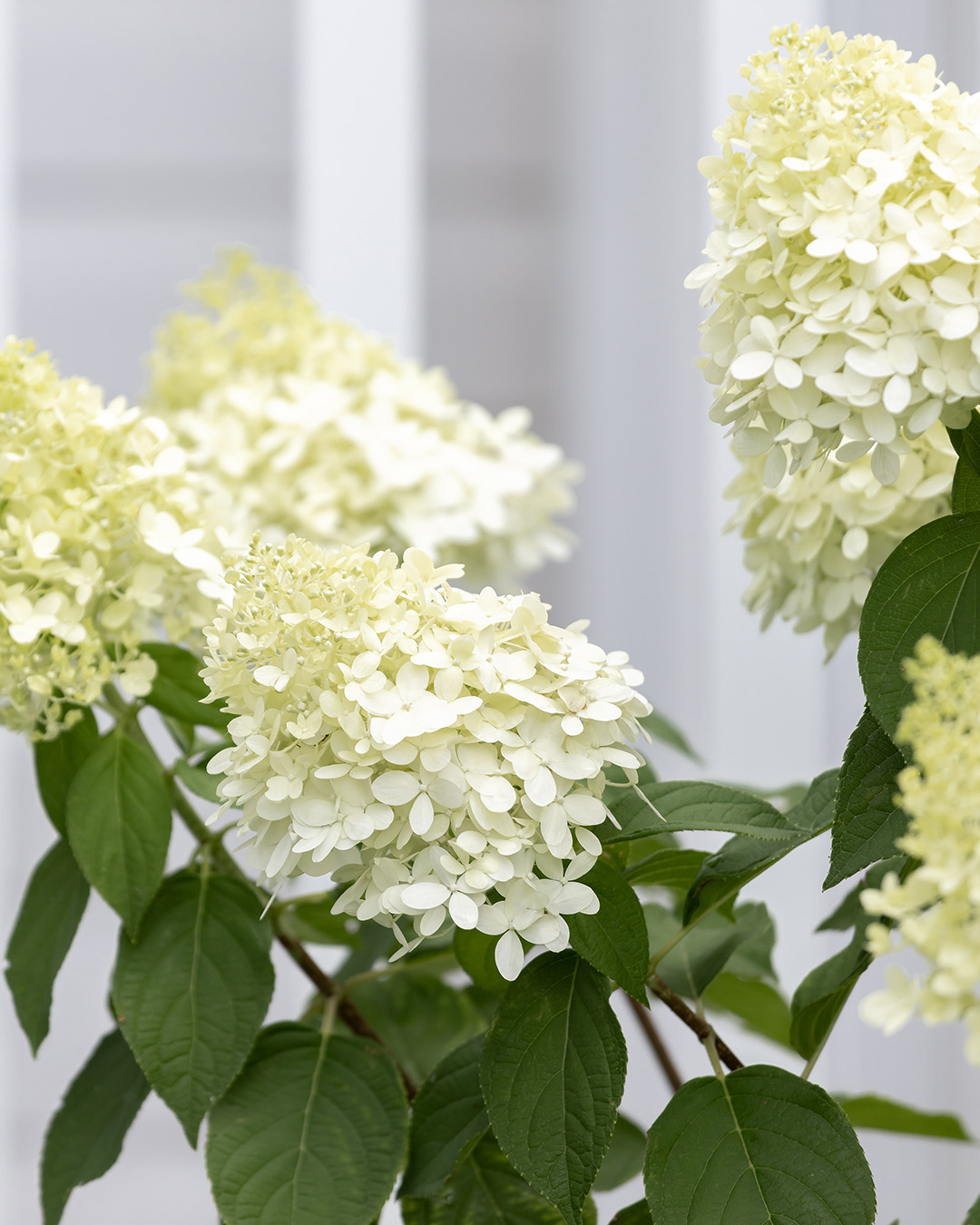Hydrangea Leaves Turning Yellow - Truths
Wiki Article
Our Hydrangea Leaves Turning Yellow Statements
Table of ContentsIndicators on Hydrangea Leaves Turning Yellow You Should KnowNot known Facts About Hydrangea Leaves Turning YellowHydrangea Leaves Turning Yellow - TruthsAbout Hydrangea Leaves Turning Yellow
One possibility is that the plant is not getting sufficient sunshine. Throughout the wintertime months, the days are much shorter, and the sunlight is not as intense, so see to it to place your Hydrangea in a place where it will certainly access least 6 hours of sunshine each day. Another reason for Hydrangea yellow leaves in wintertime can be way too much water.Lastly, the leaves may be turning yellow due to temperature stress. Hydrangeas like cooler temperature levels, so if the plant remains in a place that obtains too warm or as well cold, the fallen leaves will certainly transform yellow. If you believe temperature stress might be the concern, attempt relocating your Hydrangea to a various area or safeguarding it from the aspects with a cloth wrap.
New development will certainly be observed in early spring, when you'll notice green vegetation growing from stems that might have appeared dead. If your fallen leaves are transforming brownish in spring or summer, there are most likely various other factors at play. Hydrangea Leaves Turning Yellow. The specific reasons depend on the range and their growing problems, yet generally, brownish hydrangea leaves suggest dehydration and wilting in the warmth
In the spring when the mercury remains reasonably low, they'll do fine. When points warm up over the summer however, time spent in the very early afternoon rays can create unknown damage.: Expand your hydrangeas in a spot where they'll obtain sunlight in the mornings or nights, but not throughout the peak hours.
Fascination About Hydrangea Leaves Turning Yellow
Wilting is triggered by absence of dampness, suggesting there are a few good techniques to use to prevent this from occurring. Provide your hydrangeas a healthy and balanced glug of water every few days when the temperature levels are climbing up high, and treat the soil to better maintain moisture. After watering, a bit of mulch around the base of each plant should aid with this by keeping dampness in the dirt.This interrupts fungi spores from clearing up. "The Botrytis fungus grows in cool and damp conditions, so prevent bathing the entire plant when watering and just water at the origins," shares Roy Nicol, a Master Horticulturist - Hydrangea Leaves Turning Yellow. If you've missed out on the opportunity for avoidance and are dealing with an infection you should get internet rid of all dead or severely contaminated fallen leaves from the plant and ruin them to protect against more spread
As a basic guideline of thumb, we advise removing fallen leaves when they are 50% brown or higher. While browning triggered by any kind of reason can not be turned around, taking the restorative action defined above will certainly urge the plant to expand brand-new fallen leaves so the damaged fallen leaves either his comment is here fall off normally or can be eliminated by the garden enthusiast.
Hydrangeas need to be watered only when the top couple of inches of soil are completely dry, and ought to be offered an extensive saturating each time. Underwatered hydrangeas are most likely to have yellow, wilting, and sagging fallen leaves.
The smart Trick of Hydrangea Leaves Turning Yellow That Nobody is Discussing
The method you repair hydrangea leaves transforming yellow depends on the essential issue causing the yellow leaves. This can be challenging to determine, once you do you will certainly be able to change your plant care accordingly to take care of the trouble. As stated in the past, a common problem with hydrangeas is nutrient shortages.Throughout the height expanding season, you ought to sprinkle at a rate of about 1 inch each week. If you are fretted concerning not appropriately sprinkling your hydrangeas, there are a number of points you can do. Adding mulch to the base of the plants over the origin area help to manage the temperature around the bush and preserve water in the dirt.

If it is also serious, some plants will certainly never ever recover from transplant shock and will certainly proceed to decrease up until they pass away. Decrease transplant shock by consisting of as numerous origins as feasible when digging up your plant to relocate. Make Visit Your URL certain to give more water than usual in the weeks complying with growing to aid your plant recoup and expand new roots.
The 6-Minute Rule for Hydrangea Leaves Turning Yellow
To stay clear of spreading fungal conditions, make certain to thouroughly tidy and sanitize any kind of trimming tools before and after use. Finally, you can attempt to flush the origins with water to remove excess fertlizer.
If you do not sprinkle your hydrangea plant for more than a week, the leaves will start transforming yellow. Fungal conditions that attack the plants have a tendency to reveal signs on the origins and the fallen leaves of the plant.
Fallen leave place is an additional fungal condition that can target hydrangea. It results in the fallen leaves transforming yellow and the look of brownish and purple areas on the leaves.
Report this wiki page